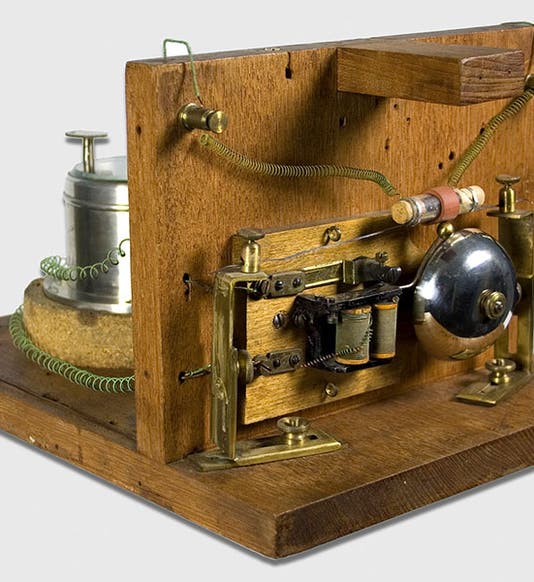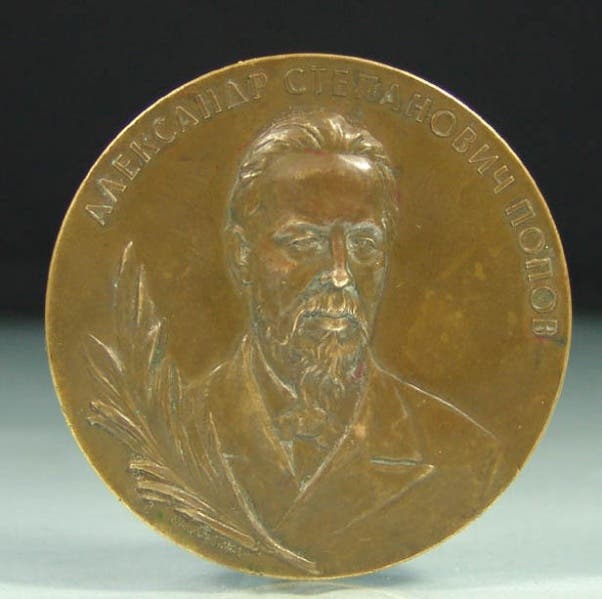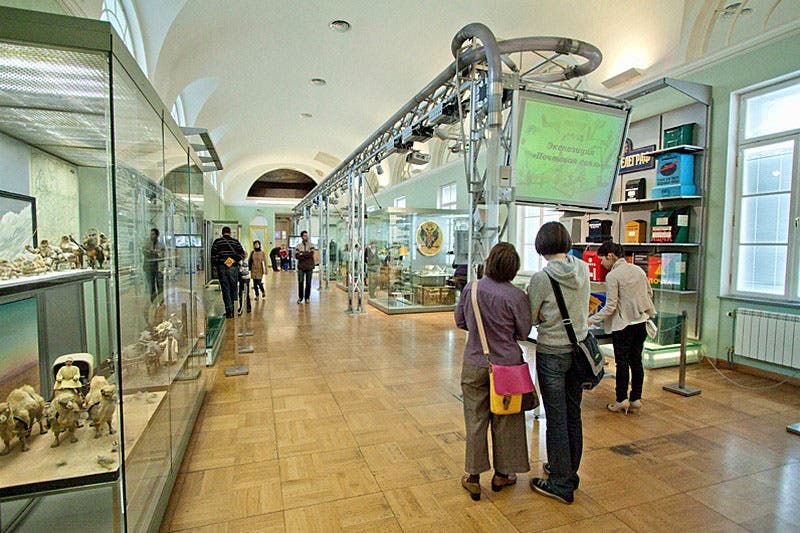Scientist of the Day - Alexander Popov
Alexander Stepanovich Popov, a Russian physicist, was born Mar. 16, 1859. Nearly everyone knows that Guglielmo Marconi was the inventor of radio, but nearly everyone is wrong about this. Marconi received the Nobel Prize in 1909 for the "development" of radio, not the invention – lots of other people were ahead of him here. Nikolai Tesla has many proponents in the United States as the inventor of radio, while in England they give the credit to Oliver Lodge, who in 1894 invented the first detector, called a coherer, which reacted to the presence of radio waves, a key step if one wants to use radio waves to communicate. It is easy to generate radio waves, but detecting them is much more difficult, and Lodge's coherer allowed one to do just that.
But if you ask anyone in Russia who invented radio, they will tell you: Alexander Stepanovich Popov. And they have a good case. On May 7, 1895 (this would be after Lodge but before Tesla and Marconi), Popov demonstrated a radio receiver to the Russian Physical and Chemical Society in St. Petersburg, and he published a paper on his device later that year. In March of 1896, Popov is supposed to have transmitted the wireless message "Heinrich Hertz" between two buildings on the campus in St. Petersburg (Hertz, a German physicist, was the first to predict the possibility of radio waves in 1888). This claim is unfortunately unverifiable, since the experiment was commissioned by the Russian Navy and was kept secret for years. Nevertheless, Popov has as good a claim as most of the other candidates to be called the father of radio, and in Russia, that is just what they call him. On May 7, 1945, on the 50th anniversary of Popov's first demonstration, Russian authorities established a celebratory day, called "Radio Day," and it is still marked in Russia every May 7.
There is a museum in St. Petersburg, called the A.S. Popov Central Museum of Communications, that has a number of Popov inventions, including the coherer he used for his demonstration in 1895 (first image). It may be the original, but more likely it is a later model – Popov made many of them. Here is the museum webpage on the object – Google will translate it for you if you right-click and ask politely. The bell served the double function of announcing the arrival of a signal and shaking the coherer – which consisted of loose iron filings – back to its initial state and ready for the next signal.
I thought I would also show you a period photograph of a slightly different Popov coherer – it looks to my eye to be an later model than the one in the Museum (third image, above). This came from a book published in 1907, and Wikimedia commons brought along the original caption (click on the caption to see the full entry). You will notice that the caption claims that Popov did his experiment on April 25, not May 7. In 1895, that would indeed have been the date on the calendar in Russia, and in 1907 as well. But Russia was still operating under the Julian calendar, 300 odd years after the Gregorian calendar had been adopted in Catholic countries, and subsequently by nearly everyone else. Apr. 25 in the Russian calendar was May 7 in the Gregorian calendar. When Russia finally adopted the Gregorian calendar, on Jan 31, 1918, the calendar was moved ahead 14 days, and all of the important historic dates had to be corrected by advancing them the proper number of days as well. And that is why Russia celebrates Radio Day on May 7, and not April 25. And also why we commemorate the anniversary of his birth on Mar. 16, and not Mar. 4, the date on his record of birth (there was a 12-day calendar difference in 1859, and in 1895).
There are not many portraits of Popov; we use the one most frequently reproduced for our second image. It portrays him as a young man (he was 36 years old when he demonstrated his coherer). But then, Popov never got very old, dying in 1906 at the age of 46. He has been the subject of quite a few postage stamps in former Soviet republics, as you can see if you follow this link. Someone also issued a medal of Popov in 1958; we assume it was intended as a centennial tribute, and it is a handsome one. We show it as our fourth image.
But Popov’s principal monument has to be his museum in Saint Petersburg. Founded in 1873, it was named after Popov in 1945, at the same time that Radio Day was established. Although it is a general museum of the history of telecommunications, many of its objects are Popov-related, as you can see if you scan this page listing its 87 certified “monuments of science and technology”; by my count, 11 of these objects are the products of Popov’s inventive genius. Most of them have their own separate webpages, which you can find from the thumbnails below.
Dr. William B. Ashworth, Jr., Consultant for the History of Science, Linda Hall Library and Associate Professor emeritus, Department of History, University of Missouri-Kansas City. Comments or corrections are welcome; please direct to ashworthw@umkc.edu.









